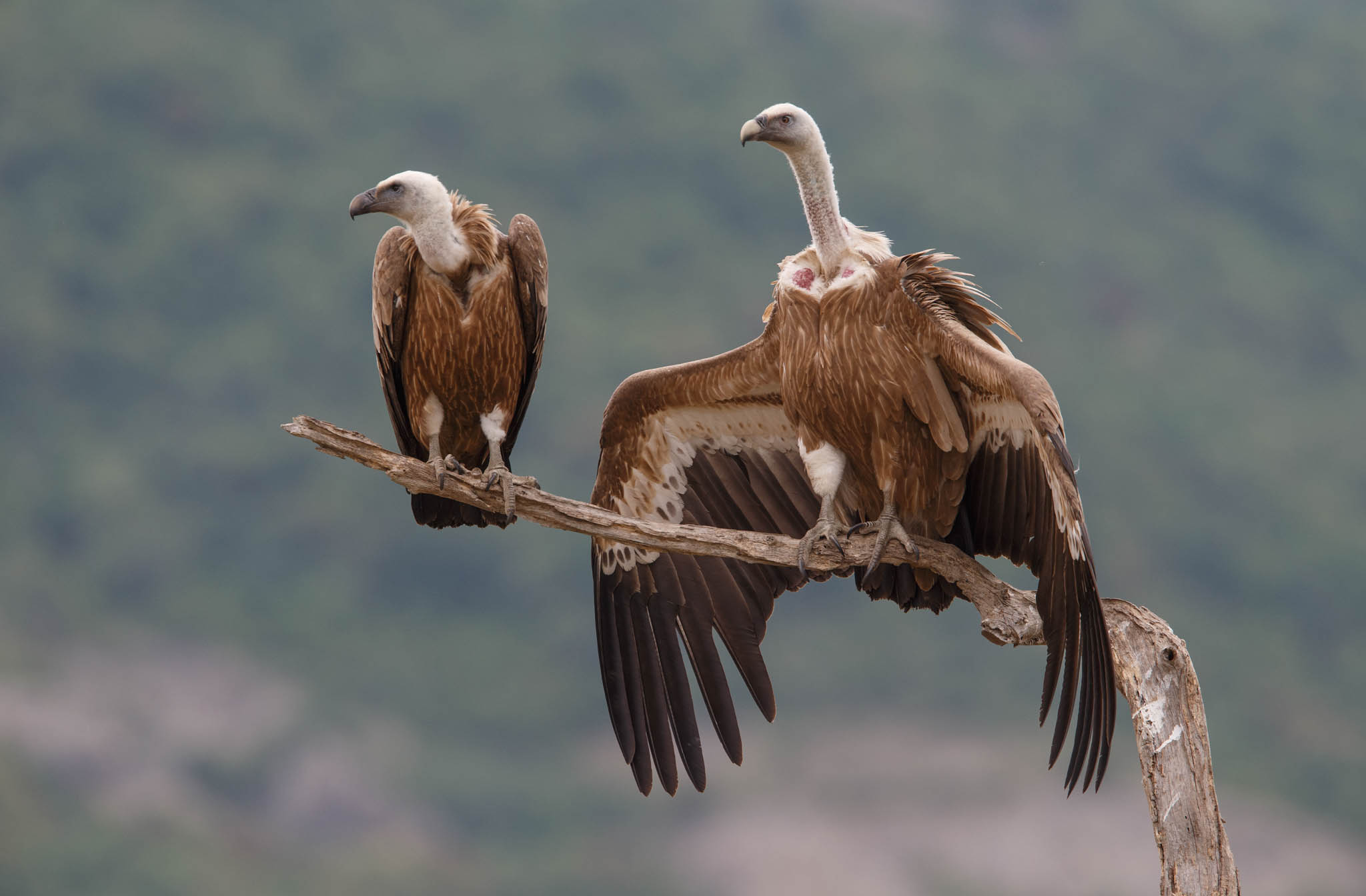Following last summer’s success, this year’s fledging of 62 young vultures represents another milestone for the ongoing LIFE Vultures project and rewilding in Bulgaria’s Rhodope Mountains.

Rewilding Europe is thrilled to report that 62 griffon vulture fledglings have successfully taken to the air for the first time in the Rhodope Mountains rewilding area. This maintains the upward growth trend in the birds’ population, with 51 young vultures leaving their nests in this part of Bulgaria in summer last year. It rewards the constant monitoring of the rewilding area by the Bulgarian Society for the Protection of Birds (BSPB) – Rewilding Europe’s partner organisation – in July, and all vulture conservation efforts carried out as part of the ongoing LIFE Vultures project.
Vulture chicks hatch at the end of March and early April. They are then raised by their parents for nearly four months until they are ready to fly, taking to the air for the first time around 140 days after birth. By the middle of summer the young vultures typically weigh about seven to eight kilogrammes; while they are not quite as heavy as their parents, they are the same size, and have all their feathers (although the colouring in juvenile vultures is different to adult birds).
While the first young vulture take-off was observed in the region of the Studen Kladenets Reservoir in the middle of July, some birds left their first attempt at flight until later in August. Vulture chicks are often seen practicing flapping their wings while they inhabit nesting ledges. When the wind picks up they often open their wings to “feel” the flow of air – this may be a way of learning how to use the wind when they eventually do take to the skies.
Birds are born with the instinct to fly, but they still have to learn the mechanics of flight. The first flying lessons for vultures are challenging for both parents and fledglings, with the former constantly coming and going from the nest.
In the first few weeks of tentative flight young vultures usually stay close to their nests. They refine their flying skills, learning how to use their wings to take advantage of air currents. It is during this period that we witness atypical vulture behaviour, as these are birds usually renowned for their aerial prowess.
Young vultures often find themselves on the ground as a result of an unsuccessful landings. They then have to climb to a high cliff or other convenient place to take off, making this the most hazardous stage of their development. It is for this reason that most vulture nesting colonies in the Eastern Rhodopes have been monitored and protected since 2017. Those carrying out this work can help vultures in potentially dangerous situations return safely to their nests.
Within the framework of the LIFE Vultures project two young birds were fitted with GPS transmitters, allowing the Rewilding Rhodopes team to monitor their first steps in real time. So far eight young birds have been tagged with transmitters, of which five unfortunately did not survive.
Starting in 2016, the five-year LIFE Vultures project was developed by Rewilding Europe, in collaboration with the Rewilding Rhodopes Foundation, BSPB and a range of other partners. Focusing on the Rhodope Mountains rewilding area in Bulgaria, as well as a section of the Rhodope Mountains in northern Greece, the aim of the project is to support the recovery and further expansion of the black and griffon vulture populations in this part of the Balkans, mainly by improving natural prey availability, and by reducing mortality through factors such as poaching, poisoning and collisons with power lines.
